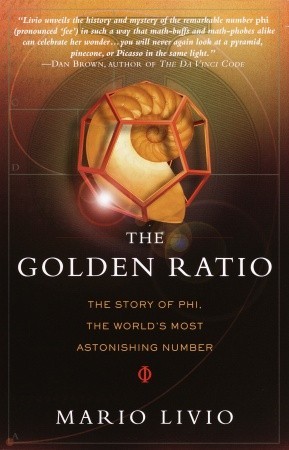What do a rose, a falcon’s spiral descent, and Salvador Dali’s “Sacrament of the Last Supper” have in common? As Mario Livio explains, they all share a connection to phi, “the most irrational of all irrational numbers.”
Livio approaches this biography of the number phi, which is also known as the Golden Ratio, with engaging energy and enthusiasm. The book’s hyperbolic subtitle, “The Story of Phi, The World’s Most Astonishing Number,” exemplifies the author’s charmingly overzealous approach. In addition to his infectious excitability, Livio displays a unique anecdotal writing style, leaping easily from subject to subject, producing prose that resembles the whimsical course of a good conversation more than the straightforward exposition of a textbook. (For those with a more mathematical bent, there are extended proofs in the book’s appendices).
Livio recounts the humble birth of phi: the division of a line by Euclid into two parts such that the ratio of the larger part to the smaller is equal to the ratio of the whole line to the larger part. He then outlines and evaluates how phi—which is equal to about 1.6 followed by an infinite string of nonrepeating decimals—evolved from this piece of geometrical trivia into an important constant with myriad applications. For example, though it was originally defined in the rigidity of man-made mathematics, used only for drawing certain shapes and solids with geometrical accuracy, phi has been found over and over again in nature. Botanists have realized that leaves are arranged around a branch in ratios that converge on the Golden Ratio. This makes sense in light of the fact that all leaves are vying for the same sunlight, so plants would naturally tend to minimize overlap; no ratio would provide less overlap than “the most irrational of irrational numbers.” In a similar display of nature’s efficiency, phi has been recognized as the natural proportion of dense quasi-crystals. The number has also been applied to aesthetic ideals of proportionality in art and architecture, to the formation of natural spiral shapes, and to countless other varied phenomena.
Despite Livio’s consistently conversant and engaging prose and the awe-inspiring ubiquity of the number phi in the natural and man-made worlds, the book runs into problems when Livio steps into the role of the mathematical hanging-judge, convicting so-called “Golden Numberists,” who are overeager to find examples of phi lurking everywhere, on countless charges of “number juggling” and approximation. He spends inordinate amounts of time debunking bogus theories. For example, while his intelligent debunking of Golden Numberist theories on the Great Pyramids is compelling and important (a quick Internet search will reveal just how many people are convinced that the Egyptian pyramids are arranged in Golden proportions), his efforts become boring and repetitive when applied to matters of less renown. He discusses an incredible number of paintings and artifacts supposedly based on Golden proportions only to discredit all the Golden Numberist theories on the same or similar grounds. Fortunately, Livio sets his sights much higher than a story of a certain number and its mathematical manipulation.
The exploration of phi is not an end in itself for Livio; rather, he uses the number’s prolific and varied history as a gateway into a discussion of mathematics as a whole: its power, its beauty, and its ubiquity. This power and beauty, Livio claims, is captured in “the surprise felt upon perception of totally unexpected relationships and unities.” The rich story of phi evokes such surprise, instilling in readers an awe for mathematics and the universe it defines.

